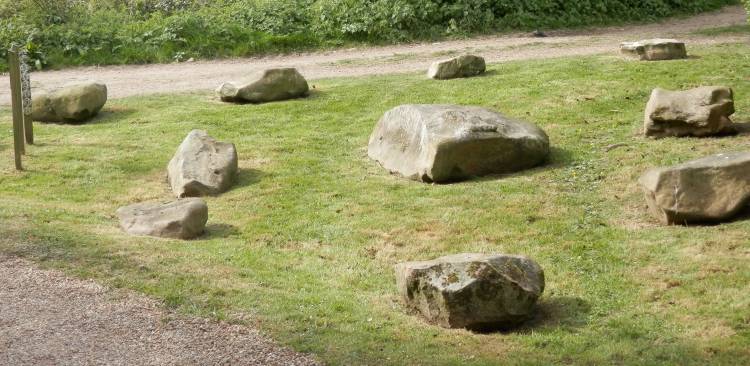Fred Payne’s discovery of four large sarsen stones, apparently stacked one on the other, together with the digger driver’s memory of what sounded like a stone circle with a fire in the middle, all seemed to be exciting evidence of a pre-Christian religious activity at Church Knoll.
In 1989, the present owner of Church Knoll built an extension to the east of the house and the foundation trenches revealed some 16 large sarsens. However, there was no evidence whatsoever that they had been touched by man. There was no bone, pottery or any other man-made artefact, no sign of post holes or foundations and all the stones lay flat with no stacking or shape. There was evidence of a disused well of unknown depth or date but this would probably have belonged to the school established there in 1746. In short, it was clear that the sarsen stones were a natural deposit on the site.
I belatedly came across a book, ‘Megaliths, Myths and Men’ (1976), by Peter Lancaster Brown, in which he recounts his own excited investigation of the site and how he so nearly jumped to the wrong conclusions. In 1974, he was invited to see the Griffith-Jones excavations in progress and he too thought the blackened stones were evidence of a fire, but a closer look revealed stains of organic leaf mould.
I got in touch with Professor A.S. Goudie at the School of Geography at Oxford, who was involved in the Geological survey of Britain and has written about sarsen stones in the south of England. He explained that the stones are found naturally in the Reading beds on the hilltops and could have been left behind when melting glaciers washed away the clays to form the Chiltern valleys. The stones could also have slid downhill at the end of the ice age as the top layer of permafrost melted to form an ice slide, a process known as solifluxion. A very shallow slope would have been sufficient and the resulting heap of stones would have remained as the water continued to erode the valley below it to form the knoll.
We must therefore accept that no evidence has been found of pre-Christian religious activity on or around Church Knoll. However, the focus of so many roads and footpaths on a large area of common land in the centre of the parish is likely to be a very old pattern, much older than Christianity. Presumably some sarsen stones were always visible on the surface and my own hunch, and it is no more than that, is that it would be surprising if such an evocative place was not recognised and used by our forbears.
© Miles Green, February 1997

